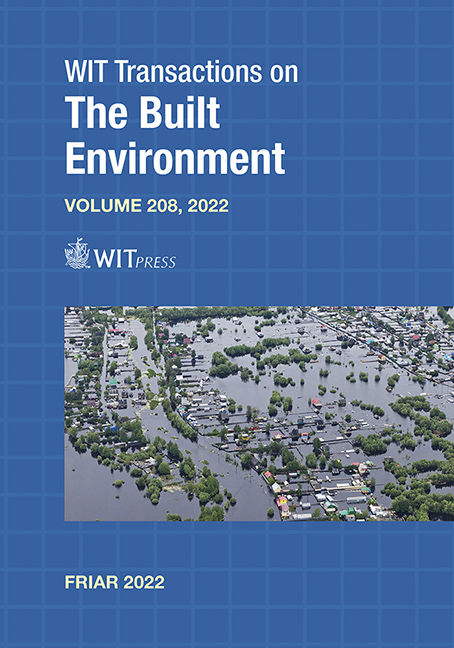SIMULATIVE FLOOD DAMAGE MODELLING TAKING INTO ACCOUNT INUNDATION LEVEL AND FLOW VELOCITY: UNCERTAINTIES AND STRATEGIES FOR FURTHER REFINEMENT
Price
Free (open access)
Transaction
Volume
208
Pages
14
Page Range
27 - 40
Published
2022
Paper DOI
10.2495/FRIAR220031
Copyright
Author(s)
HOLGER MAIWALD, JOCHEN SCHWARZ
Abstract
In recent years, floods in Germany have caused billions of Euros in property damage. As part of the project “Innovative Vulnerability and Risk Assessment of Urban Areas against Flood Events” (INNOVARU), a realistic, practical model for the monetary assessment of potential flood damage to residential building stock was developed, which also allows the prognosis of structural damage. The structural damage can be predicted in the form of mean damage grades using vulnerability functions, which take into account the vulnerability of the different building types depending on the inundation level and flow velocity. So far, the scatter in the damage has not been taken into account. The paper presents “fragility functions” which enable the quantification of the exceedance probability of certain damage grades depending on inundation level and flow velocity. These functions allow the identification and implementation of the scatter of structural damage. They also enable a simulative damage prognosis using the Monte Carlo method, which provides the basis for loss calculations and serve to quantify the scatter within the financial loss indicators. This can introduce a new level of cost–benefit analyses for the planning of new flood protection measures. For lower flow velocities, typical for river floods, the study is based on a comprehensive qualified damage dataset compiled after the 2002 flood in Germany. The lack of reliable damage data caused by high flow velocities during flash flood events is compensated by an innovative approach. For this purpose, damage data from the tsunami of the Tohoku earthquake in Japan in 2011 are re-evaluated and included in the analysis. The developed “fragility functions” are applied to the re-interpretation of the August 2002 flood damage and loss in six different study areas in the Free State of Saxony. An outlook to the application for flash flood events is given.
Keywords
structural damage, damage prognosis, flow velocity, vulnerability classes, fragility functions, validation, simulation, scatter





